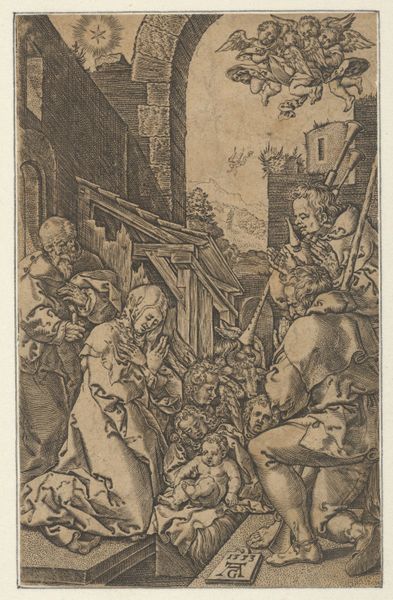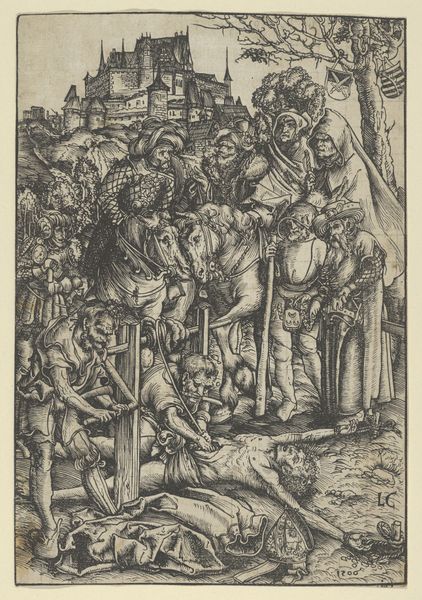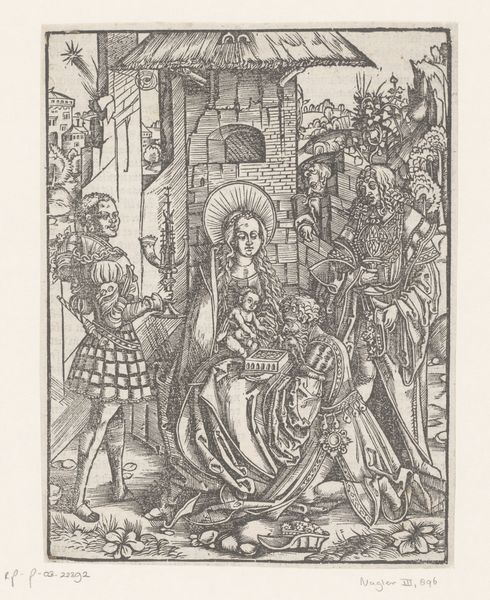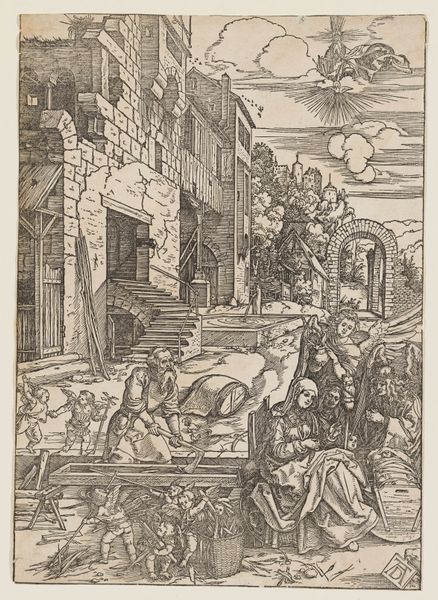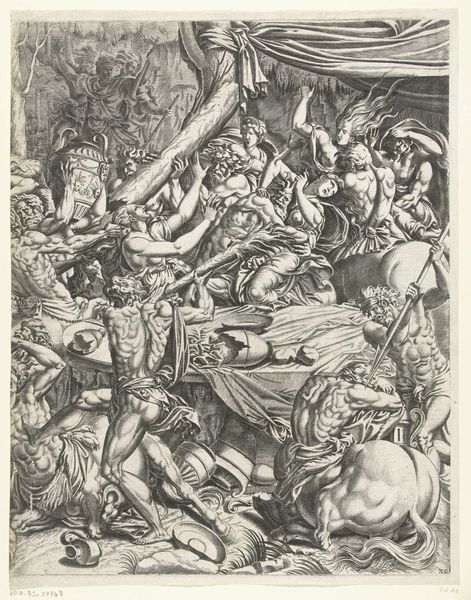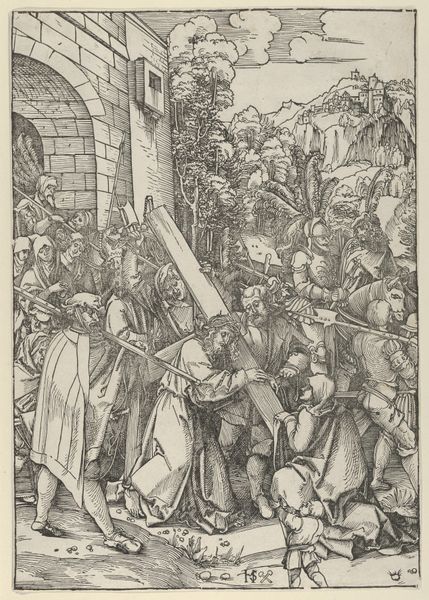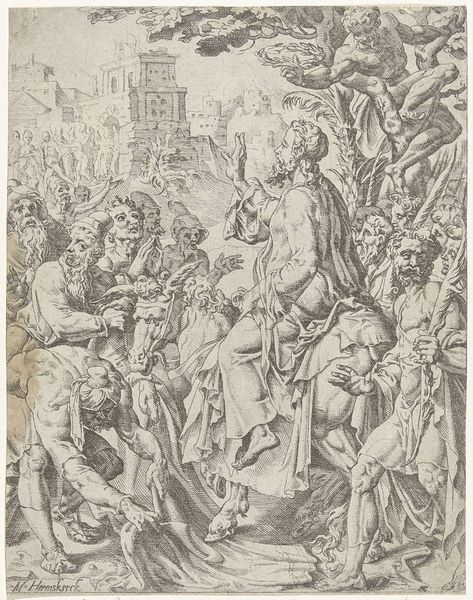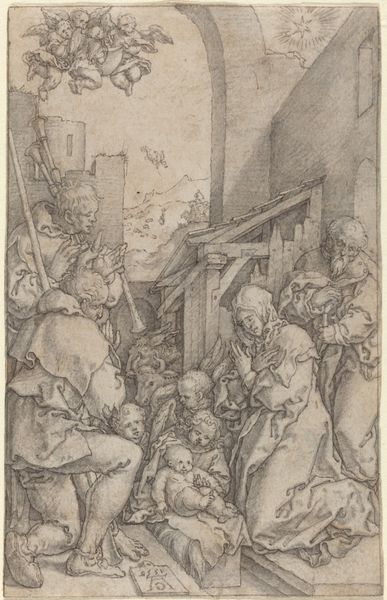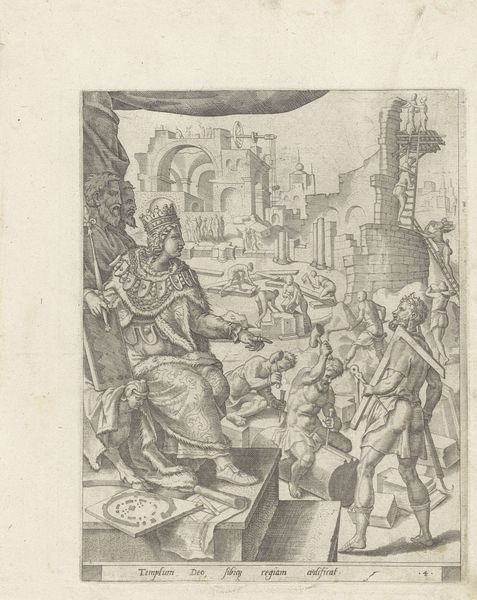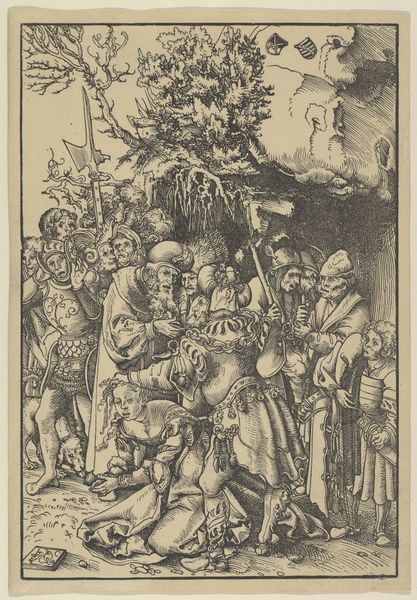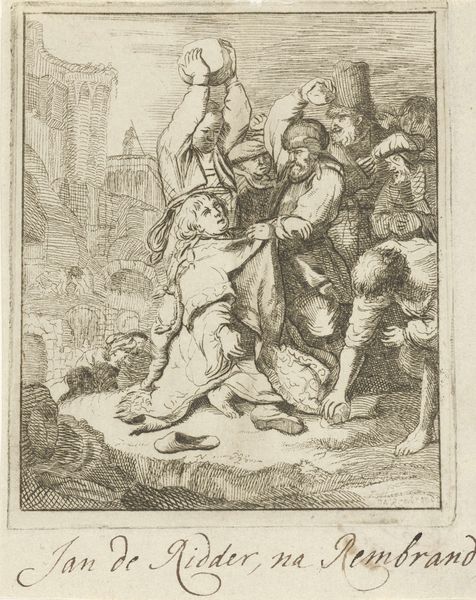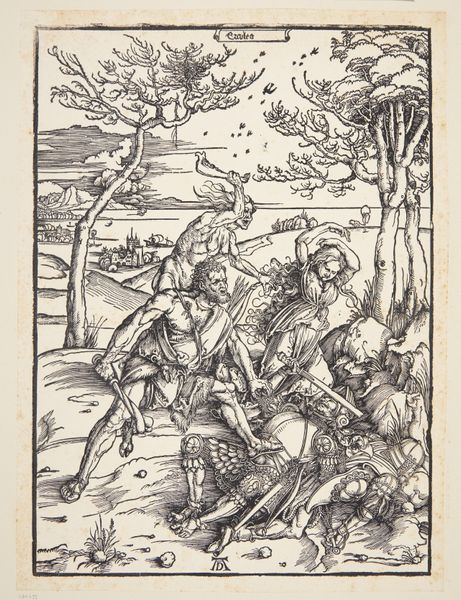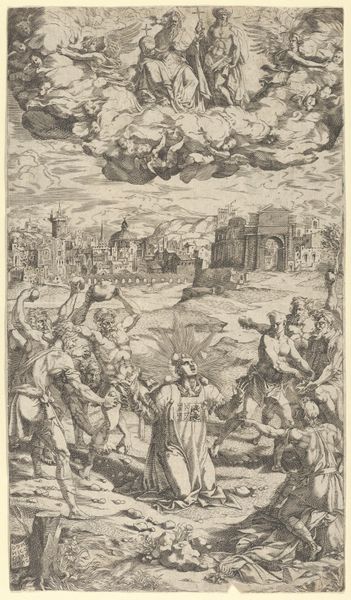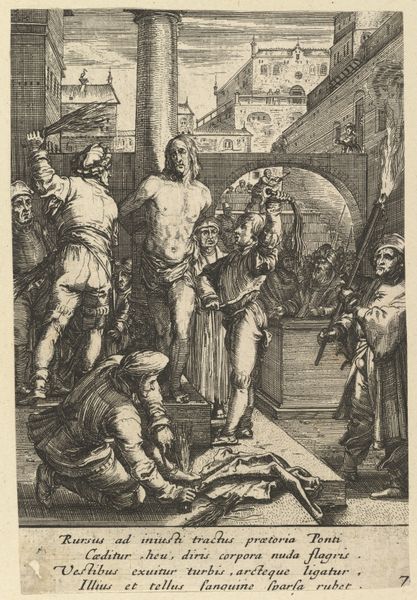
drawing, print, engraving
#
drawing
# print
#
landscape
#
perspective
#
figuration
#
line
#
genre-painting
#
history-painting
#
northern-renaissance
#
engraving
#
virgin-mary
#
angel
#
christ
Dimensions: Sheet: 4 7/16 × 2 13/16 in. (11.2 × 7.2 cm)
Copyright: Public Domain
Curator: Standing before us is Heinrich Aldegrever's 1553 engraving, "The Adoration of the Shepherds." Editor: It's fascinating how such a tiny print can evoke such a monumental, almost overwhelming feeling. Look at the sheer density of figures, the tight composition! Curator: Absolutely. Aldegrever, a prominent figure in the German Northern Renaissance, masterfully utilizes engraving to depict this pivotal biblical scene. The setting moves away from a classicized Holy Land towards something distinctly local to Northern Europe, almost a genre painting blended with history. Editor: I'm really struck by the contrast in textures achieved solely through line. The roughhewn wood of the manger against the delicate folds of the Virgin Mary's robes, even the wiry hair of the shepherds – all achieved with this incredibly labor-intensive process. What would such work mean to an artisan of his day? Curator: These details mattered intensely. Printmaking allowed for wider distribution of imagery and, therefore, influence. Aldegrever, known for his involvement in the Protestant Reformation, undoubtedly saw his prints as a way to disseminate religious narratives beyond the confines of the Church. He shaped public imagery. Editor: And consider the paper itself, a valuable commodity! To see such fine detail impressed into the very fabric of the medium highlights the skill involved and suggests the careful hand of the artist-craftsman behind it. Curator: True. The dramatic perspective, guiding the eye from the foreground figures back towards the landscape with the distant town, shows Aldegrever's engagement with contemporary artistic trends, mainly how one’s world related back to a cultural ideal. It’s a fascinating intersection of faith, artistry, and the socio-political context of 16th-century Germany. Editor: Looking at this today, it really emphasizes the artist's labor and reminds us that even a religious scene is created through material processes and social exchange, more than just divine intervention. Curator: Indeed, the meticulous detail within this print provides ample evidence of the intense labor, and speaks to the historical moment that informed its creation and distribution. Editor: Thinking about the material and its dissemination alongside its socio-religious function offers up layers to admire, even beyond the image.
Comments
No comments
Be the first to comment and join the conversation on the ultimate creative platform.
